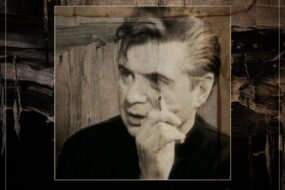

Welcome to One Fine Show, where Observer highlights a recently opened exhibition at a museum not in New York City, a place we know and love that already receives plenty of attention.
It’s hard to pick a favorite Rembrandt, but I wouldn’t argue with someone who chooses The Anatomy Lesson of Dr. Nicolaes Tulp (1632). Made when the artist was just 26 years old, the scene has all the hallmarks we’d come to associate with him, from the pathos on the faces watching the dissection to the cinematic lighting and staging. The dead man was named Aris Kindt, and he was hanged that day for robbery. Young Rembrandt practiced his photographic skill for details on the eerie pallor and density of his stiffening flesh.
Flesh is the main subject in “The Anatomy of Painting” at the National Portrait Gallery, the first major museum exhibition dedicated to the work of Jenny Saville (b. 1970) in her native United Kingdom. The show brings together fifty works from across her long and celebrated career, reaching back into the 1990s to examine the evolution of her practice and her well-earned place in the canon of contemporary art history.
Like Rembrandt, her skill emerged early, and this show begins with her breakthrough painting Propped (1992), though that work is more in conversation with two other major influences: Willem de Kooning and Lucian Freud. Propped sees a woman balanced on a stool—or is it a candlestick holder?—atop thighs so massive that they make Freud’s flabs seem realistic. She is, like de Kooning’s Woman series, about the impossible idea of a woman, like those geometric shapes, no less appealing for her conceptualism.
As a badass YBA, it’s natural for Saville’s work to have a punk feeling to it, and I believe this aspect emerges from the extent to which her subjects tend to pose. This is most obvious in her works that show multiple angles like Strategy (1994), Shift (1996-7) and Hybrid (1997), which borrow the language of photography and collage in a further breaking of the rules for this kind of medium. These are “unabashed, abundant bodies,” as Roxane Gay writes in the catalogue, asserting agency beyond their owners.
It’s perhaps inevitable for the punk sensibility to lead to actual gore, as in Torso II (2004-5), Suspension (2002-3) and Witness (2009). Those were bloody years, and her meat bags had to burst at some point. But her masterful implication returns with the Red Stare Collage series from the same era, in which the subject, likely a girl, stares with disturbing non-emotion as her face succumbs to violence or disease, though it might also just be stage four de Kooningism.
Pregnancy is a more recent subject, but even then, the body rebels, as does its extension: the child. The Mothers (2011) sees a naked pregnant woman struggling with two nude babies—the sketch marks for their movement left in the work as if to signify the eternal unruliness of all human forms.
“Jenny Saville: The Anatomy of Painting” is on view at London’s National Portrait Gallery through September 7, 2025.
More exhibition reviews











